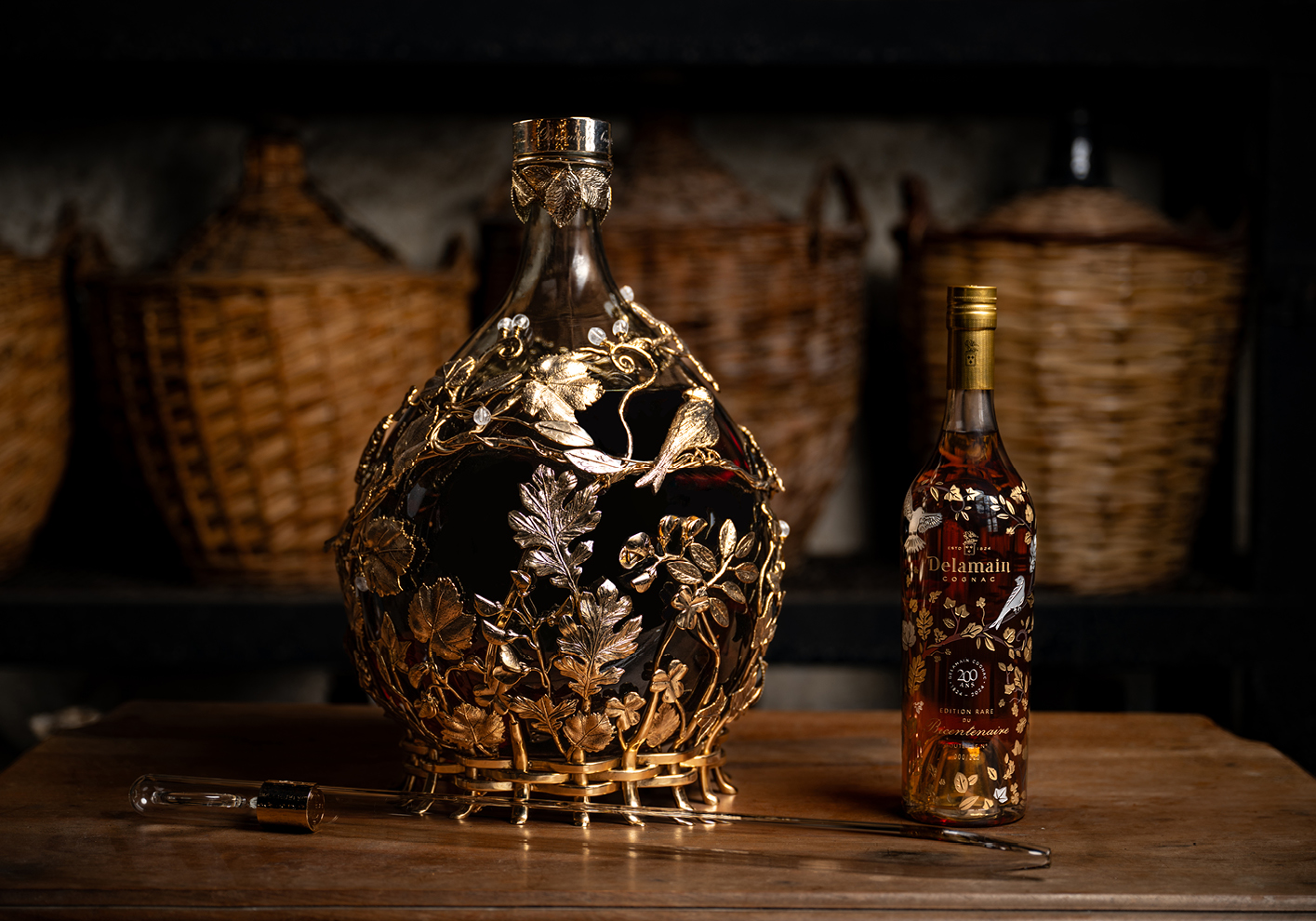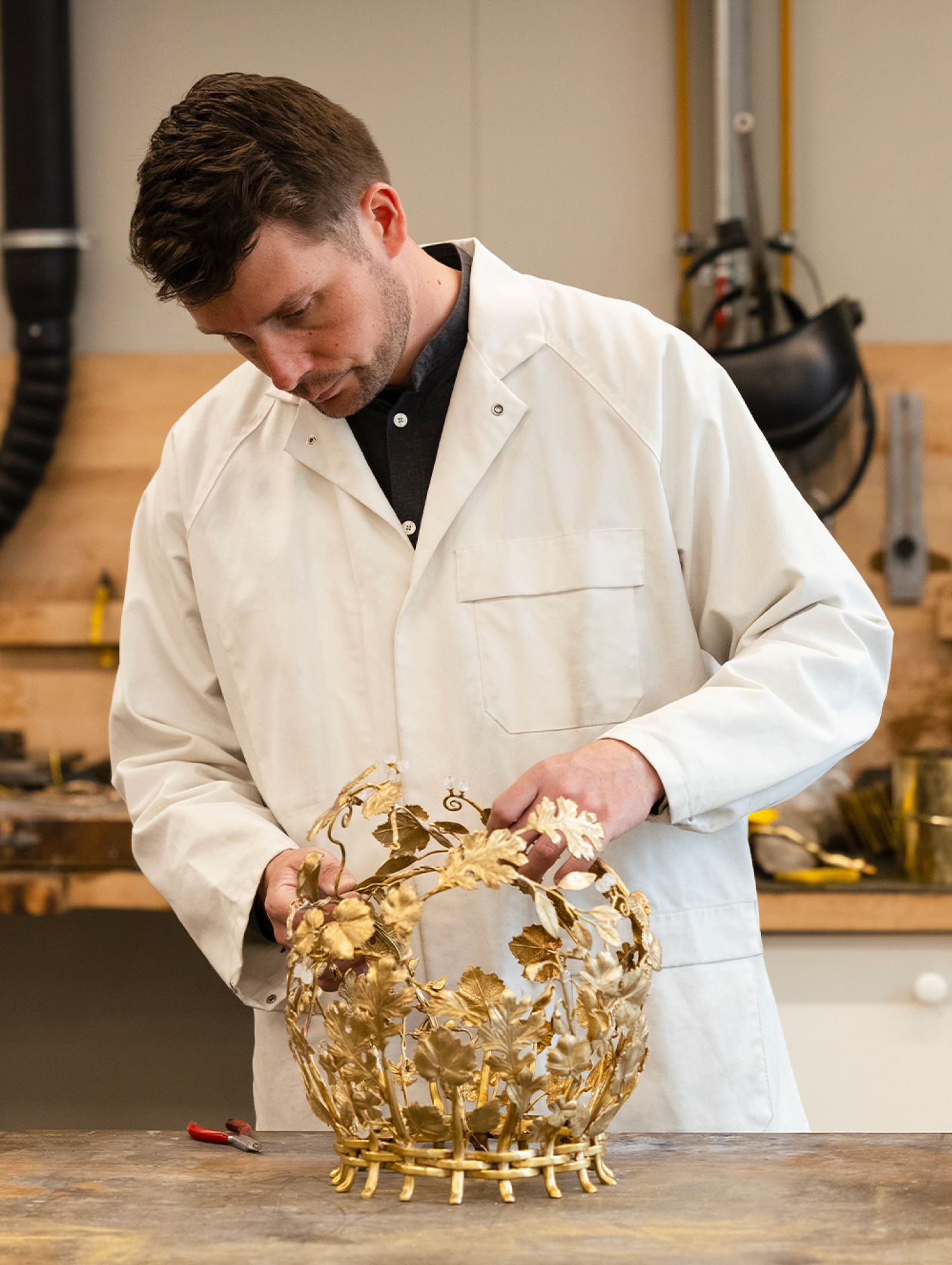WORDS
Chris Madigan
Delamain’s low production levels keep it out of Cognac’s Big Four maisons, but its signature pale and dry style draws approving nods from those in the know. It has quietly and elegantly gone about its business for 200 years. This anniversary is marked by the release of 200 bottles of Edition Rare du Bicentenaire (€6,000), a special blend of eaux de vies from as far back as 1893, assembled by the two most recent cellar masters, Dominique Touteau and Charles Braastad, a Delamain family member who this year swapped his CEO role for that of master blender.
The Delamain style seems to be achieved by making things hard for themselves at every turn. First, the maison uses eaux de vie exclusively from the Grande Champagne terroir, the central cru of the region, generally held to produce the best spirit for a long-aged cognac.
Braastad explains, ‘There are three ways we acquire eaux de vie. We have the Domaine de la Rambaudie, just south of here in the heart of Grande Champagne: 21 hectares of vineyards that we have cultivated for five years. We also purchased the stock of the grower, so we have cognac going back to 40 years, which allows us to launch single-estate cognac [Pléiade La Rambaudie].’
It is a tiny plot, even for Delamain’s selective output. So, just like its high-production rivals, Delamain turns to other winemakers. ‘The second way is to ask different growers from families we’ve known for ages to distil eau de vie to our style that will age in our cellar from the start. And the third way is by purchasing semi-aged cognac, for example at 10 years old, and we will give it another 20 years’ ageing here.’
The fact that Braastad refers to 10-year-old cognac as semi-aged reveals the next self-imposed restriction. No VS or VSOP here – they only release XO brandies (aged a decade or more). The reason is connected to the choice of only Grande Champagne terroir. ‘The only problem with Grand Champagne, like with most of the good things, it takes more time,’ says Braastad. ‘If you are in a hurry, if you want to make two-, six-, 10-, even 15-year-old cognac, Grand Champagne matures too slowly. It is delicate, but at the beginning, it is too delicate, so delicate that there is not too much to taste; it’s very thin, so you have to wait.’
Other houses do use Grande Champagne eaux de vie at a younger age, because the delicate aromas are given some heft by the use of new French oak barrels. Surprise, surprise, that’s not a corner Delamain is prepared to cut, so they only mature in previously used casks, meaning the wood effect is far less pronounced: ‘Eventually, the delicacy becomes elegance. So our purpose is to keep this delicacy through the journey of ageing, and not to cover it with wood.’
It’s the same reason Delamain doesn’t use eaux de vie distilled on the lees, which can intensify flavours and allow them to develop complexity; or add sugar or caramel, both of which are legally allowed. The pale and dry result fools a lot of people who expect an aged cognac to be rich and nutty brown. ‘We are difficult people; we choose difficult paths; everything we choose is always the longest way,’ laughs Braastad.

L’Edition Rare du Bicentenaire has taken a longer path than most. To mark this journey, a special one-of-one 10-litre dame-jeanne of L’Edition Rare du Bicentenaire is currently under auction at Bonhams Paris, with final bids on 6 December (estimated to fetch €100,000-€200,000). The traditional woven wicker cover of the glass vessel into which cellar masters transfer eaux de vie when they have reached their potential is here reimagined into a golden vineyard inhabited by birds, by the Parisian atelier Galerie Goossens.

The birds are a reference to Jacques Delamain’s 1928 book, Pourquoi les Oiseaux Chantent, one of many books on everything from architecture to philosophy in an impressive family bibliography. There is a poetry to some of the contemplations on the nature of the Cognac region: ‘On the sunny slope of the limestone hillock, a ringing, like the knocking together of glass beads, identifies in the walnut tree a flock of corn buntings, motionless as the brown leaves that winter has probably forgotten on their branches. A little later, with the last burnished rays of light, another chorus, clearest and freshest of all perhaps, the linnets, who will cheer up the dying day.’

These ornithological musings connected with a favourite saying of Dominique Touteau’s when sharing an unusually remarkable eau de vie. Standing in the cool dark of one of the ancient cellars, he would chuckle, ‘Oh, it’s a rare bird.’ And so, another 2024 release, the outgoing maître de chai’s final blend, is named after that saying. Delamain L’Oiseau Rare (£1,500), like a flight through an orange grove in blossom, is well worth seeking out.





